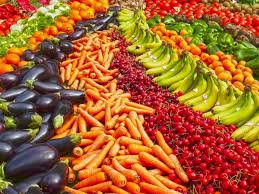Morocco has recorded a major breakthrough in its agricultural trade with Europe, becoming Spain’s biggest supplier of fresh fruits and vegetables by value for the first time. Between January and May 2025, official data from Spanish customs, compiled by the Federation of Associations of Producers and Exporters of Fruits and Vegetables (FEPEX), shows that Morocco’s shipments to Spain were worth €834 million. This is a 30% increase compared to the same period in 2024.
In terms of quantity, France still holds the top position with 549,069 tonnes, marking an 11% growth from the previous year. Morocco comes second with 322,810 tonnes, which is a 26% jump. However, Morocco’s lead in value despite being second in volume tells a different story. It shows that Spanish buyers are now paying more per kilogram for Moroccan produce, which signals higher quality, better presentation, and strong compliance with European market standards.
Analysts say this shift is not by accident. Morocco’s agricultural sector has been undergoing years of targeted investment in modern farming methods, packing houses, and quality control systems. Farmers and exporters have adopted internationally recognised certifications to gain access to demanding European supermarkets. Logistics have also improved, with upgraded road networks, cold storage facilities, and faster shipping routes ensuring fresh goods arrive on time.
The timing of Morocco’s rise is also linked to challenges faced by Spanish farmers. In recent years, Spain’s domestic output of fruits and vegetables has been hit by climate change, unpredictable weather patterns, and water shortages. Many Spanish growers are struggling with reduced yields, forcing importers to source more from neighbouring countries. Morocco, with its proximity and competitive prices, has become a reliable supplier to fill the gap in supermarket shelves.
This development marks a reversal in the long-standing trade balance between the two countries. Traditionally, Spain was a major exporter of fruits and vegetables to Morocco. Now, the flow has changed — Spain depends more on Moroccan produce to meet its own market demand.
However, this success comes with new challenges for Morocco. Water scarcity is a growing threat. The country is currently experiencing one of its driest periods in recent history. Irrigation systems in major farming areas are already under pressure, and farmers are being forced to adjust their crop choices and adopt water-saving technologies. Investments in drip irrigation, desalination plants, and better resource management have helped maintain output so far, but experts warn that relying heavily on limited water reserves could affect the sector’s long-term sustainability.
Agricultural experts also point out that Morocco will have to balance export growth with the need to protect local food security and rural incomes. If too much produce is exported, domestic prices could rise and affect local consumers. On the other hand, scaling back exports could reduce foreign revenue from agriculture, which is one of the country’s major sources of income.
Spain’s reliance on Moroccan produce is expected to grow even further if climate pressures continue to affect European agriculture. This could mean more opportunities for Moroccan farmers and exporters, but it also means that the country must keep improving its production efficiency, environmental management, and quality assurance to remain competitive.
For now, Morocco’s rise to the top of Spain’s fresh produce market is a strong sign that its agricultural reforms are paying off. The combination of modern farming methods, strict quality control, and strategic positioning has put the country in a leading role in European food supply. The challenge ahead will be to keep this momentum going while protecting the country’s water resources and ensuring fair benefits for local farmers.
